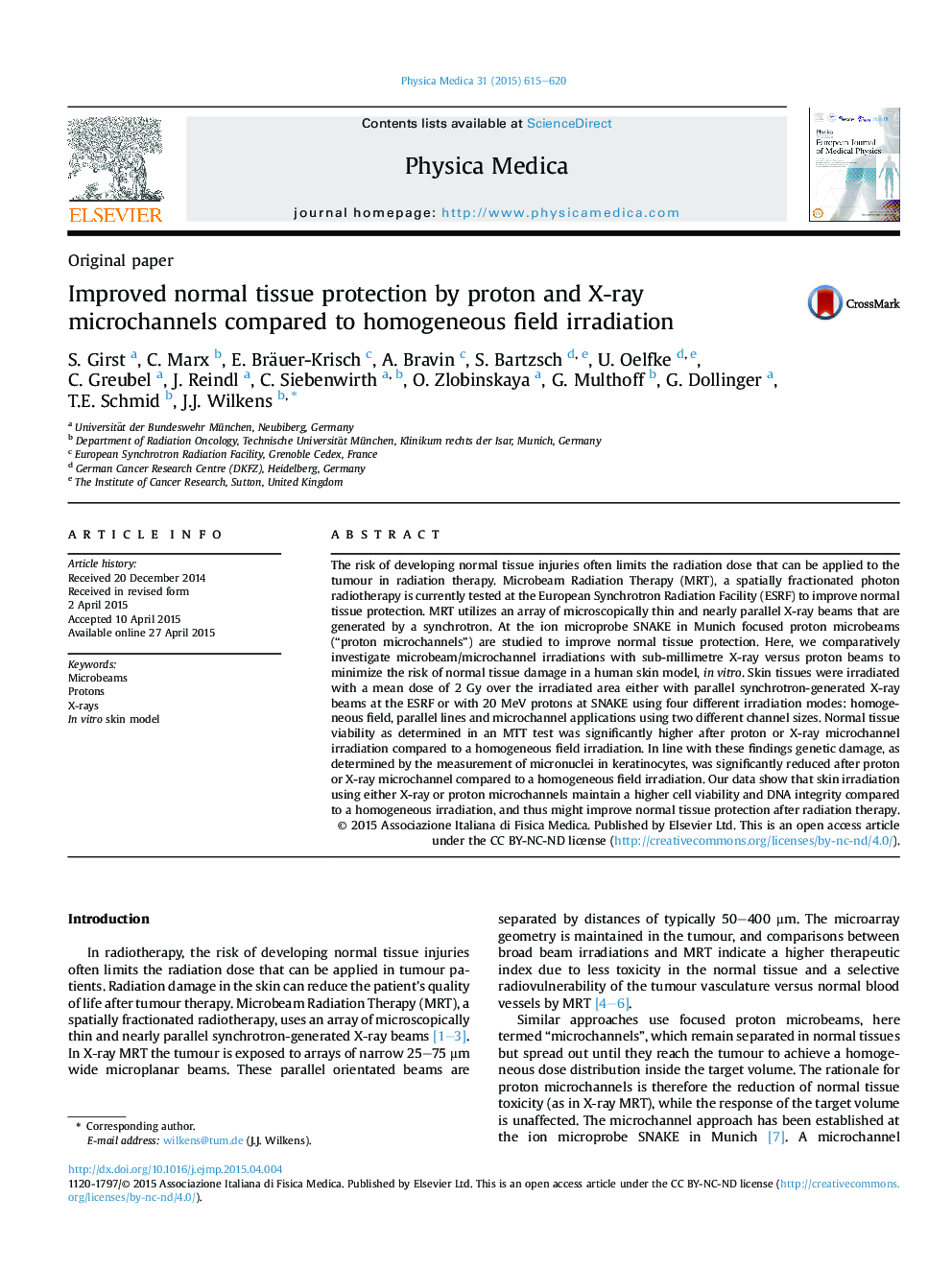| Article ID | Journal | Published Year | Pages | File Type |
|---|---|---|---|---|
| 10731383 | Physica Medica | 2015 | 6 Pages |
Abstract
The risk of developing normal tissue injuries often limits the radiation dose that can be applied to the tumour in radiation therapy. Microbeam Radiation Therapy (MRT), a spatially fractionated photon radiotherapy is currently tested at the European Synchrotron Radiation Facility (ESRF) to improve normal tissue protection. MRT utilizes an array of microscopically thin and nearly parallel X-ray beams that are generated by a synchrotron. At the ion microprobe SNAKE in Munich focused proton microbeams (“proton microchannels”) are studied to improve normal tissue protection. Here, we comparatively investigate microbeam/microchannel irradiations with sub-millimetre X-ray versus proton beams to minimize the risk of normal tissue damage in a human skin model, in vitro. Skin tissues were irradiated with a mean dose of 2 Gy over the irradiated area either with parallel synchrotron-generated X-ray beams at the ESRF or with 20 MeV protons at SNAKE using four different irradiation modes: homogeneous field, parallel lines and microchannel applications using two different channel sizes. Normal tissue viability as determined in an MTT test was significantly higher after proton or X-ray microchannel irradiation compared to a homogeneous field irradiation. In line with these findings genetic damage, as determined by the measurement of micronuclei in keratinocytes, was significantly reduced after proton or X-ray microchannel compared to a homogeneous field irradiation. Our data show that skin irradiation using either X-ray or proton microchannels maintain a higher cell viability and DNA integrity compared to a homogeneous irradiation, and thus might improve normal tissue protection after radiation therapy.
Keywords
Related Topics
Physical Sciences and Engineering
Physics and Astronomy
Radiation
Authors
S. Girst, C. Marx, E. Bräuer-Krisch, A. Bravin, S. Bartzsch, U. Oelfke, C. Greubel, J. Reindl, C. Siebenwirth, O. Zlobinskaya, G. Multhoff, G. Dollinger, T.E. Schmid, J.J. Wilkens,
